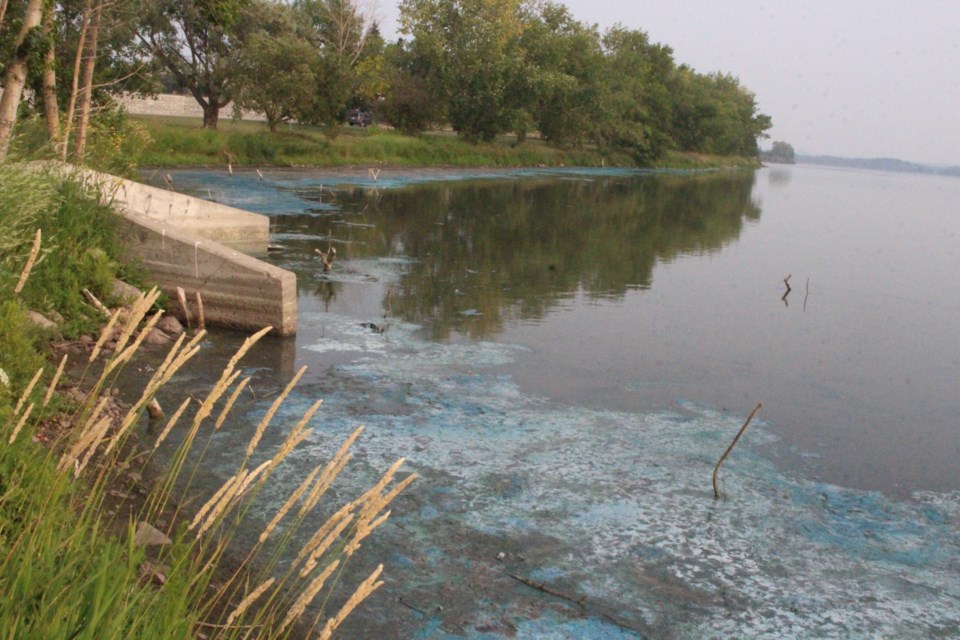BONNYVILLE – Cyanobacteria, commonly known as blue-green algae, is often confirmed through water testing as it is not always visible to the human eye. However, a recent blue-green algae bloom on Bonnyville’s Jessie Lake is hard to miss for those passing by.
Bright blue and turquoise algae blooms are currently visible on many parts of Jessie Lake’s shoreline paired with a potent and putrid odour originating from the lake.
“Although Jessie Lake is not a recreational lake, the Town encourages residents to avoid the areas where algae blooms are present and to exercise caution,” states information provided by the Town of Bonnyville’s administration.
Moose Lake Watershed Society chair Kellie Nichiporik confirmed to Lakeland This Week that the algae blooms currently visible on Jessie Lake are in fact cyanobacteria.
“The blooms may be more prevalent due to the amount of smoke in the air,” noted Nichiporik.
Blue-green algae can regulate its buoyancy allowing it to move in the water column to access different resources it may need, such as moving to the surface to access more sunlight for photosynthesis, she explained.
If blue-green algae has adequate sunlight, it may go lower in the water column to access more nutrients, like phosphorus.
“Blooms are also weather dependent, which makes the occurrence, severity and persistence hard to predict,” she said.
“Jessie lake has a thriving bird population, which contributes a huge amount of nutrients into the lake. This creates a highly productive ecosystem which in turn can result in larger, more severe cyanobacteria blooms.”
According to the watershed chair, “There are over a hundred different species of cyanobacteria, each one is specialized to thrive in different conditions – some even grow under the ice in winter. As cyanobacteria can synthesize their own nitrogen, it can easily outcompete other algal and plant species.”
While the blue-green algae bloom is highly visible on Jessie Lake at the present time, it is not the only body of water in northeast Alberta reporting the presence of cyanobacteria.
Alberta Health Services has placed active blue-green algae advisories for eight recreational lakes in the northeast region. Area lakes currently under a blue-green algae advisory includes Elinor Lake, Kehewin Lake, Moose Lake, Muriel Lake, Lac La Biche Lake, Lower Therien Lake, Square Lake and Stoney Lake.
Residents should always avoid areas with visible blooms and avoid recreating in those waters. Contact with active blooms can cause health issues, such as skin rashes.
“When blooms die and decay, they release toxins that can cause nerve and liver damage. They can also be fatal, especially to vulnerable people and pets,” added Nichiporik.
RELATED STORY: Citizen scientists needed to collect samples from Moose Lake



